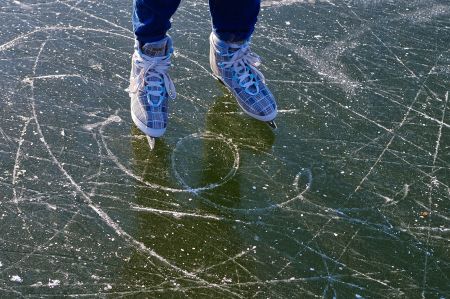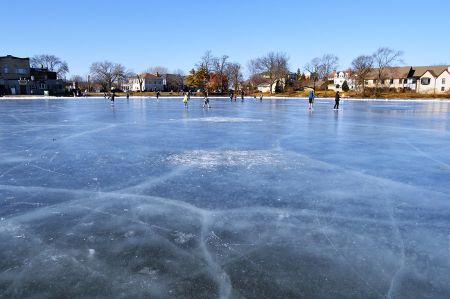Ice skating on Rhine-Rhone Canal with Patrick
- Written by Portal Editor
Some inspirational images of the frozen Rhine-Rhone Canal south of Strasbourg in winter, sent to us by our friend and paraglider Patrick Andre from France, inspired us to write an article about ice skating, a still little practiced outdoor sport in Turkey.
Especially due to the heavy shipping traffic on the Rhine-Rhone Canal, complete icing is already a very rare event, especially where the thickness of the ice was more than 20 centimeters and the ice appeared as smooth as glass. The winter temperatures, especially in central and eastern Anatolia, would offer excellent opportunities to practice this great outdoor sport. Ice rinks are only set up and open to the public in a few large cities, such as Izmir.
About ice-skating development in Europe

There is reliable evidence of the use of bones for locomotion on ice from around 3,000 BC. Made from the bones of various animal species such as horses, cattle or reindeer, the bones were split, ground flat and angular, pierced and then attached to shoes with straps. Sharpened sticks were often used for propulsion. The British archaeologist V.G. Childe, who was able to examine and identify a bone ice skate from Veseli u Trnavy in Slovakia that is at least 5,000 years old. In Central Europe, pig's foot bones were often used as a gliding aid on the ice, but it is at least questionable whether this is where the term "eisbein" comes from as a delicacy. These bone skates were still in use in some countries like England, Norway and Iceland into the 19th century.
Oldest steel skates in Budapest Museum

It was not until the 19th century that constructions were possible that replaced the strap construction as a holding device, initially by means of a screw and later by clamping directly on the sole of the shoe. This type of skate attachment was widespread in Europe well into the 1950s and 1960s. As early as 1865, the American figure skater had developed all-metal skates that were connected to the shoe sole and thus offered considerable advantages. The Swedish figure skater and 10-time world champion Ulrich Salchow then developed the tips on the skates, which allowed him to accelerate much faster, which led to the first jumps on the ice. This development was continuously continued, so that today we basically find two rough subdivisions: ice hockey skates and freestyle skates (with and without spikes).
With Patrick Andre skating Rhine-Rhone-Canal
In the meantime, it is already a small sensation when large areas of water freeze over at all due to global warming and climate change. While it was just after 15 years that the so-called Alster fun could be held in Hamburg for the first time, one realizes that it is something extraordinary to skate on the Rhine-Rhone Canal, and what's more, on a mirror-smooth ice surface.
Please read as well:
Romkerhaller waterfall in the Okertal in Harz Mountains
Egyptian blue painted on stone slab in Brunn am Gebirge
-
-
-
-
-
-
https://www.alaturka.info/en/france/strasbourg/5527-ice-skating-on-rhine-rhone-canal-with-patrick/amp#sigProId02928e0eca